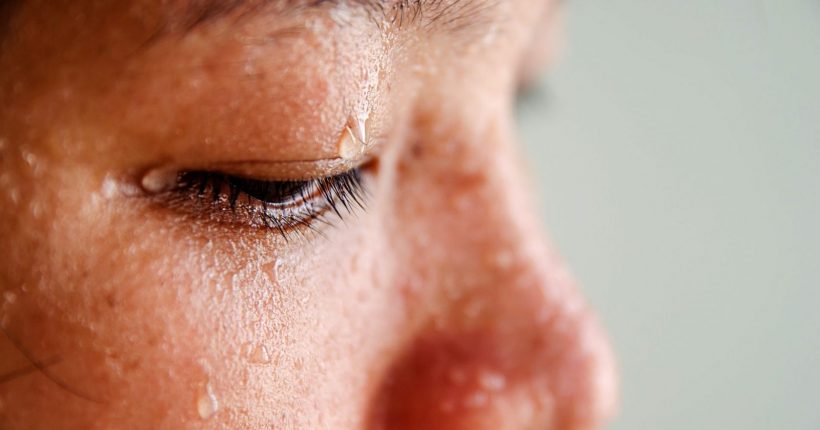Are you sick of looking like a sweaty tomato post-run? Wish you could find a way to dull the blush? Here’s why experts say it’s actually a sign of good health.
The world is divided in two: those who go bright red whenever they dare to run, cycle or walk at speed, and everyone else. No matter how fit you are or how well you’re breathing, there are plenty of fitness fans out there who go an alarming shade of scarlet when on the move. The question is, why? And why don’t the rest of us look any different?
The prospect of going deep tomato is something that puts quite a few people off exercising. If you know you flush, you might be worried about that happening in public or not being able to de-escalate it quickly enough afterwards. It’s all very well telling you that genuinely, no one cares what you look like when you run or lift, but if you know why it happens, it may make it easier to mentally handle.
You may also like
“I ran before, during and after work for a month and it changed my running regime for good”
Dr Ross Perry, medical director of Cosmedics skin clinics, explains: “As we exercise, blood is pumped through our blood vessels and capillaries at a faster rate to maximise oxygen intake, which allows more blood and heat to flow towards the skin’s surface.” That makes us sweat more – our body’s go-to way of regulating temperature. And it’s that race to regulate that “results in a red face for some and not so much for others”.
“When someone goes more red than someone else, it has nothing to do with how much harder they are pushing their bodies through exercise – it merely comes down to skin tone and individual cooling systems,” he continues.
“Those with fairer skin tend to look more red in the face, while the pigment in darker skin tones can often mask flushing on the face. Women are particularly prone to a red face because they tend to sweat less and shunt more blood to the skin, whereas men rely more on sweat to keep cool.”
Why we need to embrace going red
That sounds reasonable, but when was the last time you saw a PT with a face the colour of beetroot? Even if it’s a natural process, you may be tempted to work towards reducing that post-exercise flush – but Dr Perry say that would be a mistake.
“It is perfectly normal and shows that our body is working efficiently and that the vascular system is directing large amounts of blood through the skin, which actually has many benefits, such as removing toxins through the body to keep skin looking healthy and boosting good hormones.
“Some exercises will likely cause more of a red face than others.Jogging, cycling and high-intensity classes tend to give you that long-lasting red face which can take up to 30 minutes to disappear, while short bursts of resistance training or lifting weights will lead to the face being red for a shorter period of time.”
You may also like
Can I stay in activewear after exercise? How to look after sweaty skin after working out
Beyond the whole improved heart health and general fitness stuff, what other benefits might we reap from going red? Dr Perry explains that all exercise is good for improving circulation and delivering more nutrients and oxygen to the skin cells. He says that while there are plenty of so-called ‘oxygen-based skin treatments’, “there’s no better way to get this oxygen flowing than a good workout and looking flushed and red in the face.
“Often, after exercising, skin looks radiant and fresh due to the increased blood flow – often described as the ‘post-workout glow’.” And then there’s the more general point that exercise is known to help with reducing stress and promoting better mental wellbeing – potentially protecting your skin from stress-based breakouts.
TL;DR: going red after exercise is a biological reality for lots of women, but it’s not a bad thing.
For more exercise tips, visit the Strong Women Training Club.
Images: Getty
Source: Read Full Article
